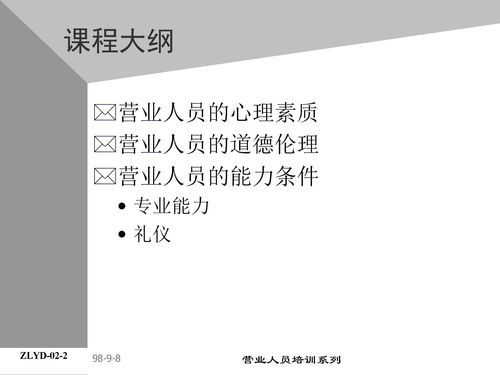双语表达
In the realm of language, English stands as a towering giant, its influence spanning across cultures, continents, and generations. The concept of "two Englishes" introduces a fascinating nuance, hinting at the diversity and evolution of this global language. To delve into this theme, we must consider not just the linguistic facets but also the sociocultural, educational, and technological dimensions that shape and are shaped by English.

Language, by its nature, is fluid and adaptable. English, in particular, has demonstrated an incredible capacity to absorb and integrate elements from various languages it encounters. This process is evident in its vocabulary, which is a rich tapestry of words borrowed from Latin, Greek, French, and countless other sources. When we speak of "two Englishes," we might initially think of British English and American English, the two most prominent varieties often discussed. However, this binary distinction oversimplifies a much more complex linguistic landscape.

British English and American English differ in pronunciation, spelling, and idiomatic expressions. For instance, the word "color" in American English becomes "colour" in British English. Similarly, "favorite" in American English transforms into "favourite" across the pond. These variations extend to phrases and cultural references, reflecting the unique histories and identities of these two nations. Yet, within these broad categories, there exist myriad regional dialects and accents, each contributing to the ever-expanding tapestry of English.

Beyond the British-American divide, English has taken root in countless other countries, evolving into distinct varieties such as Australian English, Canadian English, Indian English, and Singaporean English, among many others. Each of these varieties carries the stamp of its host culture, influencing not just the language but also how it is used in education, media, and everyday life. This diversity underscores the idea that English is not a monolithic entity but a living, breathing language that adapts to its speakers' needs and contexts.

Socioculturally, the spread of English has led to a complex interplay of identity and globalization. In many countries where English is not the native language but is widely spoken, it often serves as a bridge between local cultures and the global community. For example, in India, English is an official language, and its use is deeply intertwined with the country's colonial history and its aspirations for modernity and globalization. Indian English, with its unique blend of British and Indian linguistic features, reflects a hybrid identity that celebrates both local traditions and global connections.
Similarly, in countries like Nigeria and Singapore, English is a lingua franca that facilitates communication across diverse linguistic and ethnic groups. In these contexts, English is not just a language but a tool for social cohesion and economic development. It allows individuals from different backgrounds to collaborate, innovate, and participate in the global economy. The presence of "two Englishes" or more, in these societies underscores the fact that language is not just a medium of communication but a powerful agent of social and cultural change.
In the educational sphere, English's status as an international language has led to its widespread adoption as a medium of instruction in many countries. This trend, known as English as a Medium of Instruction (EMI), has sparked debates about the pros and cons of using English to teach subjects like math, science, and history. On one hand, EMI is seen as a way to enhance students' global competitiveness and prepare them for an increasingly interconnected world. On the other hand, critics argue that it can lead to a loss of cultural identity and linguistic diversity, as well as educational inequities for students who are not proficient in English.
The concept of "two Englishes" becomes relevant here in terms of the varying standards and expectations of English proficiency. In some educational systems, a focus on British or American English might dominate, while in others, local varieties are valued and celebrated. The balance between promoting global literacy and preserving linguistic diversity is a delicate one, requiring careful consideration of local contexts and educational goals.
Technologically, the rise of digital communication has transformed how English is used and learned. Platforms like social media, video-sharing sites, and online education platforms have democratized access to English, enabling speakers from around the world to connect, share, and learn from each other. This global online community has fostered a new kind of linguistic hybridity, where English is mixed with other languages, codes, and emojis to create unique forms of expression.
In this digital realm, the distinction between "two Englishes" becomes blurred as speakers from different backgrounds engage in real-time language exchange and evolution. For instance, slang and idiomatic expressions from one region can quickly spread worldwide, being adopted and adapted by speakers in other parts of the globe. This dynamic, decentralized approach to language learning and use challenges traditional notions of linguistic authority and standardization, emphasizing the role of individual speakers in shaping the language.
Moreover, technological advancements have led to the development of AI-powered language learning tools and translation services that cater to the diverse needs of English learners. These tools often incorporate features that recognize and accommodate regional variations in pronunciation, spelling, and usage. In doing so, they reflect the reality that "two Englishes" is just the beginning of a much richer and more complex linguistic landscape.
In conclusion, the concept of "two Englishes" serves as a starting point for exploring the rich diversity and complexity of the English language. Whether we consider the regional variations within British and American English, the hybrid identities of English-speaking communities around the world, the educational debates around EMI, or the linguistic evolution facilitated by digital technology, it becomes clear that English is a language in constant motion.
It is shaped by its speakers, their contexts, and the ever-changing global landscape. Recognizing and celebrating this diversity not only enriches our understanding of language but also fosters empathy, understanding, and respect among people from different backgrounds. As we continue to navigate an increasingly interconnected world, embracing the multifaceted nature of English will be crucial in promoting cultural understanding, fostering global citizenship, and fostering a more inclusive and equitable future.
- 上一篇: Sphere的定义与含义
- 下一篇: 公鸡的英语表达中,rooster和cock有何区别?
-
 揭秘:SW6究竟是一款什么样的神奇软件?资讯攻略02-24
揭秘:SW6究竟是一款什么样的神奇软件?资讯攻略02-24 -
 英文表达‘受欢迎’的方式资讯攻略03-28
英文表达‘受欢迎’的方式资讯攻略03-28 -
 是否的同义表达资讯攻略02-25
是否的同义表达资讯攻略02-25 -
 掌握“对...有重要性”的英语表达资讯攻略04-03
掌握“对...有重要性”的英语表达资讯攻略04-03 -
 日语表达‘没关系’的说法资讯攻略02-18
日语表达‘没关系’的说法资讯攻略02-18 -
 如何用英语表达“紧张”?资讯攻略02-09
如何用英语表达“紧张”?资讯攻略02-09











